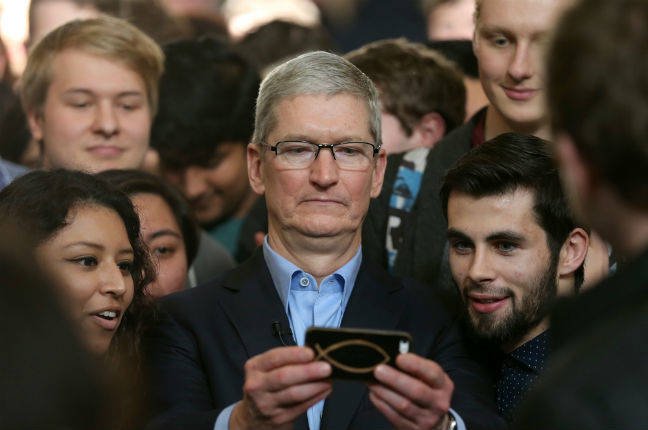More than one in five phones shipped in Q4 carried a certain fruit brand as Apple leapt to the top of a barely growing global smartphone market.
Preliminary estimates from tech analyst Canalys are obviously subject to change and only provide part of the picture, but as headlines go, Apple CEO Tim Cook will be pleased the iPhone was top dog over the company’s vital winter sales season.
Total smartphones sales edged up by just 1 per cent globally, the market watcher said, as vendors came up against supply chain woes and a resurgence of COVID-19 cases. The single-digit shipment rise equates to 363.3 million phones being sold in the quarter based on available data from Q4 2020.
Apple snuck back on top of smartphone shipments with 22 per cent market share, although Canalys didn’t provide vendor unit sales estimates at this stage. Samsung was number one in Q1, Q2 and Q3. However, Apple’s market share was lower than a year earlier, meaning it did less well proportionately.
Sanyam Chaurasia, Canalys analyst, said Apple’s return to the top spot was due to a “stellar performance from the iPhone 13.”
“Apple saw unprecedented iPhone performance in Mainland China, with aggressive pricing for its flagship devices keeping the value proposition strong. Apple’s supply chain is starting to recover, but it was still forced to cut production in Q4 amid shortages of key components and could not make enough iPhones to meet demand.”
This meant that in geographies deemed by Apple to be a priority it “maintained adequate delivery time” but in other countries, buyers will have to wait longer for Apple’s latest blower.
Samsung moved back to second spot although it grew market share from 17 per cent a year earlier to 20 per cent, indicating it took sales from rivals. Xiaomi was flat at 12 per cent, while OPPO and Vivo both dipped by 1 per cent to 9 and 8 per cent share of the shipments pie respectively.
Component availability is hitting all vendors in multiple areas but those with bigger economies of scale are benefiting.
Nicole Peng, veep of mobility at Canalys, said: “Component manufacturers are eking out additional production, but it will take years for major foundries to significantly increase chip capacity.”
Peng added: “Smartphone brands are already innovating to make the most of their circumstances, tweaking device specs in response to available materials, approaching emerging chipmakers to secure new sources for ICs, focusing product lines on the best-selling models and staggering new product releases. These practices lend an advantage to larger brands, and they are set to stay for the short term, as bottlenecks will not ease until the second half of 2022.”
Following the first ever decline in smartphone shipments in 2020, a rebound was expected in 2021 and although the first half of last year saw a double-digit bounce in sales, things seemed to limp in the other half. ®
Source link



